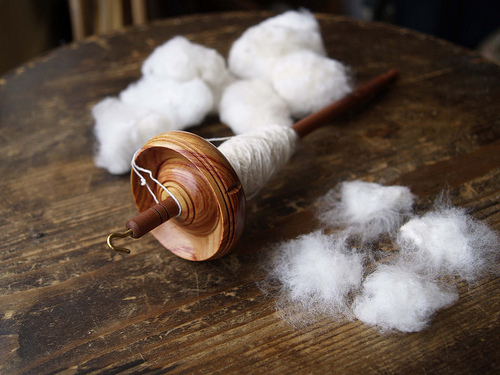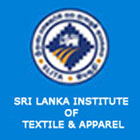FW

The International Cotton Advisory Committee (ICAC) says at the end of 2014-15, world ending cotton stocks are projected to increase 11 per cent to nearly 22 million tons. After increasing substantially in each of the three previous seasons, China’s ending stocks are expected to remain stable reaching just over 12 million tons in 2014- 15, and would account for 56 per cent of total world stocks.
Outside China, ending stocks are forecast to increase for the second consecutive season from 7.5 million tons to 9.5 million tons, which is the largest volume of stocks in the last 35 years and is 60 per cent of the expected mill use in 2014-15. While the gap between production and consumption has declined since 2011-12, production is projected to exceed consumption by 2.1 million tons in 2014-15 with most of the excess being held by producing countries with exportable surpluses. If the similar situation continues, there could be a fall in global cotton prices.
Cotton production, China and others

Production in China is estimated to be down 7 per cent to 6.4 million tons. While production has also fallen, the volume has been sufficient to meet 80 to 90 per cent of demand, with China’s consumption declining over the last four seasons. However, most of the domestic production was absorbed by China’s national reserve, and spinners relied heavily on imports from other producing countries, allowing international cotton prices to remain elevated. In 2014-15, China ended its reserve policy and in 2015 announced that it was limiting imports to the volume required under its WTO obligations.
Turkey is the world’s third largest importer, but like China, imports are expected to decrease in 2014-15. Consumption in Turkey is forecast to fall 4 per cent to 1.3 million tons as mills equipped with old machinery are shut down and cotton’s market share further declines as a result of the price attractiveness of synthetic fibers. At the same time, demand for imports is forecast to decrease by 13 per cent to 761,000 tons due in part to an estimated 11 percent increase in domestic cotton lint production to 847,000 tons.
Despite a 4 per cent reduction in area this year and some losses from flooding, production in Pakistan is estimated up 11 per cent at 2.3 million tons given the 15 per cent increase in the average yield to 820 kg/ha. Imports by Pakistan are forecast to fall 9 per cent to 367,000 tons as the current season’s crop will meet most of its need with imports mostly consisting of longer staple cotton that is not available from domestic producers.
US exports marred by declining imports
The ICAC Report points out that as the world’s largest exporter, the United States is affected by the decline in China’s and Turkey’s imports, though demand for high quality machine-picked cotton will help to limit export losses. In 2014-15, production in the US is estimated at 3.5 million tons, up 25 per cent from 2013-14, and exports are forecast to increase modestly by 2 per cent to 2.3 million. As a result, ending stocks in the United States are likely to increase 58 per cent to just over one million tons.
India, the second largest exporter is projected to experience a significant decrease in exports this season, despite a high volume of production estimated at 6.8 million tons. Consumption is forecast to increase 4 per cent to 5.2 million tons while production remains stable, resulting in a smaller exportable surplus. Additionally, demand from China and Pakistan, two of its three largest buyers, has fallen. Ending stocks in India are expected to increase 40 percent to 2.4 million tons in 2014-15 after two seasons of contraction.
Two new initiatives have been launched in Nagaland to bolster apparel and textile growth in the Northeast region. An apparel and garment making center will come up in Dimapur, the largest city in Nagaland. Nagaland will also have a weavers’ service center. These steps build upon the ‘Make in India’ initiative, which works to promote the textile industry in the region.
The North East Region Textile Promotion Scheme (NERTPS) is an umbrella scheme for the development of several textile sectors including, silk, handlooms, handicrafts, and apparel and garments. The scheme is investing a total of Rs 1038.10 crores in the 12th Five Year plan. NERTPS will work towards construction of apparel and garment factories in the Northeast. Each state will have its own center with three units.
The main focus of the initiative will be on the construction of facilities, purchase of machinery and capacity building for the next three years. It is estimated that each center will generate 1,200 jobs.
The cotton industry in Nagaland is flourishing due to the abundance of cotton and skilled workers. The motifs and patterns that are woven on to the cloth have intricate designs. Textile dyeing is a significant art among the hill tribes of the region with each tribe possessing one or two good dyes.
South Korea's textile and clothing imports hit an all-time high in 2014, raising worries that the country could fall into a trade deficit soon in an industry that used to be a major growth engine for its economy. South Korea’s textiles and clothing imports were up 8.4 per cent from a year earlier.
Exports inched down 0.1 per cent on-year, narrowing the industry’s surplus to a record low, about half the amount from a year earlier. South Korea's trade surplus in textiles and clothing peaked in 1998, but has been on a decline ever since. Experts worry if this trend continues, the country could soon post a deficit in the sector. Exports of textiles and clothing are shrinking as many factories, beset by high production costs, are moving to China and Vietnam. Imports are growing, mostly driven by cheaper products from China.
Consequently, the trade deficit with China in the sector has been worsening. Last year, South Korea exported $2.52 billion worth textiles and clothing to China, while its imports from the country was $6.59 billion about 45 per cent of the total imports for the sector.
Mark Chubb is the new chief safety officer for the Alliance for Bangladesh Worker Safety. He will oversee fire safety operations and training in Bangladesh and guide remedies in all factories from where Alliance members source from. He will be based in Dhaka and is expected to bring world-class expertise to fire safety programs.
Chubb is a certified chief fire officer and fire service health and safety officer with more than 30 years of experience in fire safety and emergency management. A seasoned expert in emergency response, crisis management and the implementation of fire safety training and emergency management programs, he has held leadership roles in public safety, firefighting and emergency management across the United States and in New Zealand.
His role as an advisor will be critical to factories from which Alliance sources, as they ensure compliance with its standards. Alliance for Bangladesh Worker Safety is a group of 28 global apparel brands, with a five-year commitment, dedicated to improving safety in Bangladesh’s ready-made garment factories. The Alliance holds each member and its factories accountable to operating workplaces that ensure fire safety.
In partnership with the government of Bangladesh, trade unions and employers, Alliance helps implement reforms that improve worker safety throughout the Bangladesh garment industry.

Sri Lanka, has emerged as a major textile and apparel exporter. In its efforts to build a $1 billion textile and garment export industry, Sri Lanka has formed an institution with an objective to cater to the demands of garment manufacturers in the country. The body popularly known as ‘Sri Lanka Institute of Textile and Apparel’ (SLITA) has engaged in promoting Sri Lankan garments worldwide. As per Navaz Musthafa, Director General, SLITA, the idea behind the formation of the institute is the country’s efforts to regain GPS Plus status.
Empowering young Sri Lankans in fashion
“The SLITA has been established after merging the Institute of Textile Training and Service Centre and Clothing Industry Training Institute under the Parliament Act No. 12 in 2009. The newly carved out SLITA offers study programs complied based on the needs of students in Sri Lanka’s while keeping industry relevance. Under the new Act, SLITA works under the Ministry of Industry and Commerce. It is empowered to award diploma, degrees at UG and PG level,” says Musthafa. 
|
|
SLITA promotes its activities globally. “We want to give an opportunity to the Sri Lankan textile and apparel sector to be a part of our marketing campaign. SLITA supports Sri Lankan textile and apparel activities worldwide. It provides resource personnel to the textile and garment industry,” he explained.
The institute provides fast track and cutting edge education to professionals for managing the apparel industry in a competitive era. The institute has entered into a Memorandum of Understanding with leading industries such as North Carolina State University, Bunka Fashion College, Japan. The institutes mandate is to create technical and management professional who can understand the dynamics of global business environment for industry.
SLITA also maintains a data base of information relating to products, import and exports and other technical information relating to the textile and apparel industry.
Musthafa sums up, “Garment and textile is a very important sector in Sri Lanka. Our exports are worth more than $5 billion and we want increase it to $6 billion. We want to get back the GSP Plus tariff which we lost and want to reopen closed garment units in our country.”
The next edition of Texprocess will be held in Germany from May 4 to 7, 2015. Texprocess will provide an excellent showcase of current sustainable processing technologies. Texprocess is an innovative forum that pays tribute to an array of products and services that includes cutting room and automation technologies, design and product development services and solutions, embroidery technology, manufacturing preparation and setting, fusing services, knitting technology, internal material flow, product processing and finishing services, quality control and assessment. It is a leading fair for the textile processing and flexible materials industry and presents the latest technological advancements and developments.
The event will offer an excellent survey of the manifold international machinery suppliers and manufacturers. Seminars within the Texprocess forum will give special attention to a sustainable production. Some exhibitors will present special resource-saving products.
texprocess.messefrankfurt.com/
Las Vegas hosted Sourcing at Magic from February 16 to 19, 2015. There were more than 40 countries represented at the gargantuan show, where companies manufacturing everything from athletic wear to zippers were represented. Chinese exhibitors made up more than half the show.
This season, the focus was on Egypt and its 25 qualifying industrial zones, where apparel made in the zones get duty-free entry into the United States under a trade-preference program. One advantage is that input materials such as fabric and trim can come from anywhere, such as China or India, but at least 10.5 per cent direct input, such as packaging, zippers or thread, must come from Israel and 24.5 per cent direct input must come from Egypt. Duty-free entry can shave off up to 32 per cent in tariffs.
This trade-preference program was started in 2005 to promote peace between Israel and Egypt as well as to help the region grow its economy. On the exhibit floor, there were 30 Egyptian companies exhibiting, many for the first time. One of these was Lotus Garments, which makes blue jeans for brand names such as Levi’s, Jessica Simpson, Polo Ralph Lauren and Wrangler.
www.magiconline.com/sourcing-at-magic
The cotton sector in Zimbabwe is on the verge of collapse. Cotton contributed sustainably to rural income, development, employment and export earnings. It was the mainstay of rural communities. The sector was a major source of livelihood for over one million people, including farmers, farm workers and the textile industry as it once contributed about 19 per cent to the country’s agricultural export earnings.
However, the 2014-2015 crop season indicates that the sector is in serious trouble because many farmers have failed to access adequate inputs from contractors. Thousands of farmers have been left stranded without any input support. Cotton farmers have failed to go back to the fields arguing that contractors have reduced farmers to mere laborers and that it is no longer viable to continue producing the cash crop.
The cost of production is too high in Zimbabwe compared to other countries, while the depressed international prices have also contributed to the decline in the number of farmers producing cotton. Farmers have abandoned cotton production due to distortion in the producer price which has had a negative effect on production. Prices this year are expected to decline further as China releases its cotton stockpile on the market. Another reason is uncurbed United States subsidies.
The concept of naturally-coloured cotton is again gaining momentum with the directives of the Prime Minister’s Office (PMO) to concerned officials for promotion of coloured cotton. Taking a cue, Dharwad-based University of Agricultural Sciences (UAS) has started the mission by organising a meeting of the sub-group on this issue. It is pertinent to note that the first naturally-coloured cotton genotype of India, DDCC-1 (G. arboreum) is a significant example of genetic improvement in fibre colour and it is now under cultivation in this region. Biotechnological research at UAS Dharwad has led to substantial progress in incorporation of Bt genes into cotton genotypes of commercial importance.
D P Biradar, Vice-Chancellor, spoke about the achievements and research at the university on naturally-coloured cottons from the1990s. He stressed on the need to create new colours and mitigate the dangers of contamination due to pollen transfer which require intensive genetic engineering tools. The university had an agreement with a cotton growers’ co-operative society at Uppinabetageri in Dharwad district where seeds of coloured-cotton were given, farmers were trained and the sangha marketed the finished fabric. This activity has to be revived and the present meeting can deliberate on these issues, Biradar added.
P Nayak, Secretary, Textiles Committee, said that a synergy is required from all stakeholders in reaching a zero-defect product which is sustainable. Value-addition to the colour-cotton in terms of industry involvement and exports are being considered for funding it in a pilot project mode. According to Director at Central Institute for Cotton Research (CICR), Nagpur, Professor Kranthi, research has been going on in improving the fibre properties and yield of colour-cotton. Hybrids can also be thought of, he said.
In a detailed presentation, B M Khadi, Director of Research at UAS, said research on colour-cotton in UAS had culminated in joint ventures with co-operative societies. The first colour-cotton variety from the university recommended the release of DDCC-1. Germplasm (a term used to describe living genetic resources such as seeds or tissue, maintained for the purpose of breeding, preservation, and other research uses) with desirable traits were available at the UAS Dharwad and it can serve a network research program.
The Karnataka government has earmarked 1,000 acres for the upcoming textile park at Yadgir in north Karnataka. The government intends to also develop an integrated park at Yadgir. The state government has acquired around 3,300 acres in Yadgir district, of which about 1,000 acres will be used for setting up the textile park. The construction of the park, in the most backward region of the state, is likely to improve condition of cotton growers and weavers besides generating employment for a large number of people.
The government is also planning to develop smaller textile parks at various places such as Vijayapura, Ballari and Chamarajanagar districts. The government wants industries to move away from the congested Bengaluru region. It intends to revise its textile policy and has sought views and comments from the stakeholders of the textile industry.
The central government has come out with a scheme of integrated textile parks in the country. Till now, several proposals have come and by March this year, around seven to eight parks will be approved. State governments have been asked to come forward and identify large areas for setting up of mega textile parks. Each of these mega textile parks will be on at least 2000 acres to 5000 acres so that foreign direct investment could be attracted.












